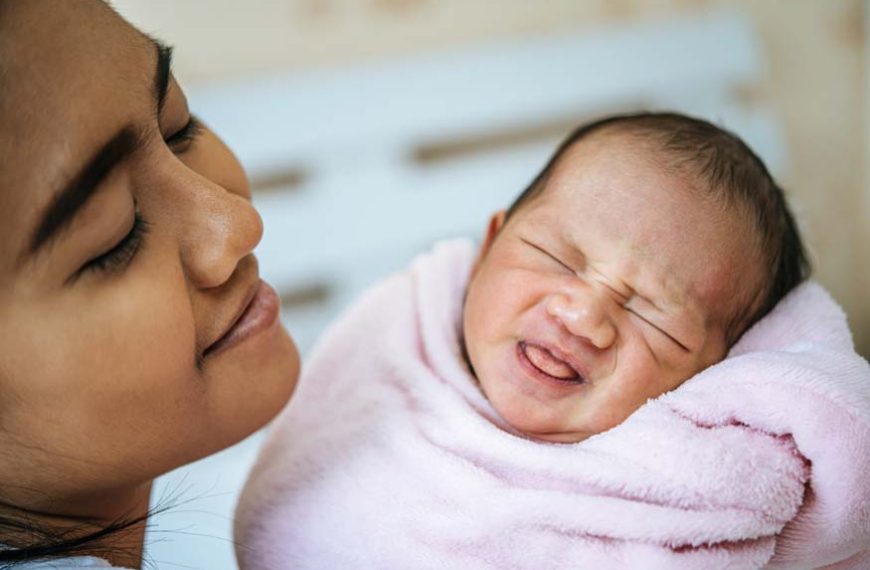The birth of a baby is a miraculous event, marked by the beginning of a journey filled with growth and development. Newborns are equipped with a set of innate reflexes that play a crucial role in their early stages of life. These reflexes are automatic, involuntary responses to stimuli, and they provide essential insights into the newborn’s overall health and neurological well-being. In this blog, we will delve into the fascinating world of newborn reflexes, exploring their types, significance, and the importance of assessing these reflexes in the early days of life.
Types of Reflexes in Newborns
Newborns possess a range of reflexes that are vital for their survival and initial interactions with the environment. Understanding these reflexes is fundamental for parents, caregivers, and healthcare professionals alike. Let’s explore some of the most common newborn reflexes:
- Rooting Reflex:
- Sucking Reflex:
- Moro Reflex:
- Grasping Reflex:
- Babinski Reflex:
One of the earliest reflexes observed in newborns is the rooting reflex. When a baby’s cheek is touched or stroked, they instinctively turn their head in the direction of the touch, seeking the source of nourishment. This reflex aids in breastfeeding, allowing the baby to latch onto the mother’s breast.
The sucking reflex complements the rooting reflex. When the baby’s lips or tongue are touched, they initiate a rhythmic sucking motion. This reflex is crucial for feeding, as it enables the baby to extract milk from the breast or bottle. Additionally, it plays a role in self-soothing behaviours, such as thumb sucking.
Often referred to as the startle reflex, the Moro reflex is triggered by a sudden change in the baby’s position or by a loud noise. The baby responds by spreading their arms, arching their back, and then bringing their arms back to the body. This reflex is thought to be a primitive survival instinct, helping the baby to grasp onto their caregiver for protection.
The grasping reflex is an automatic response where a baby instinctively grips onto an object that touches their palm. This reflex is present from birth and gradually diminishes as the baby grows older. It is believed to be a precursor to later voluntary grasping and object manipulation.
When the sole of a baby’s foot is stroked, the toes fan out and then curl in. This is known as the Babinski reflex. This response is normal in infants and typically disappears as the baby grows. The presence or absence of this reflex can provide valuable information about the development of the baby’s nervous system.
Newborn Assessment Reflexes
The assessment of newborn reflexes is an integral part of the routine examination conducted by healthcare professionals shortly after birth. These assessments offer valuable insights into the baby’s neurological development and overall well-being. Here are some key reflexes that are commonly assessed:
- Tonic Neck Reflex:
- Stepping Reflex:
- Asymmetrical Tonic Neck Reflex:
This reflex, also known as the fencing reflex, is assessed by turning the baby’s head to one side. In response, the baby extends the arm on the side to which the head is turned and flexes the arm on the opposite side. This reflex is essential for the development of hand-eye coordination.
When a newborn is held upright with their feet touching a flat surface, they will make stepping movements. This reflex is a precursor to the development of walking and is typically present during the early weeks of life.
Also known as the fencing posture reflex, this response occurs when the baby’s head is turned to one side. The arm on the side to which the head is turned extends, while the opposite arm flexes. This reflex aids in the development of hand-eye coordination and spatial awareness.
Significance of Newborn Reflexes
Understanding the significance of newborn reflexes goes beyond the observation of cute and seemingly instinctual movements. These reflexes serve essential purposes in the early stages of a baby’s life, contributing to their survival, development, and interaction with the world around them.
- Neurological Development:
- Facilitation of Early Interactions:
- Survival Instincts:
Newborn reflexes provide valuable information about the baby’s neurological development. A lack of certain reflexes or abnormal responses may indicate potential neurological issues that require further investigation and intervention.
Reflexes such as rooting and sucking play a crucial role in facilitating early interactions between the newborn and their caregiver. These reflexes ensure that the baby can effectively feed and receive the nourishment required for growth.
Reflexes like the Moro reflex and grasping reflex are believed to be rooted in primitive survival instincts. The ability to startle and grip onto objects may have offered evolutionary advantages, helping newborns stay close to their caregivers and ensuring their protection.
Many newborn reflexes serve as building blocks for the development of voluntary motor skills. The stepping reflex, for example, provides a foundation for the eventual ability to walk, while the grasping reflex contributes to the development of hand coordination.
Assessing Newborn Reflexes: A Vital Step in Paediatric Care
The assessment of newborn reflexes is an integral part of paediatric care, ensuring that any potential issues are identified early on. Healthcare professionals, including paediatricians and neonatal nurses, use a systematic approach to assess and document a baby’s reflexes during routine examinations. This process involves carefully observing and testing each reflex, noting their presence, strength, and symmetry.
Early detection of abnormalities in newborn reflexes can lead to prompt interventions and appropriate therapies, contributing to better outcomes for the baby. Additionally, the assessment of reflexes provides a baseline for monitoring the baby’s neurological development over time.
Parental Involvement in Reflex Observation
Parents also play a crucial role in observing and understanding their baby’s reflexes. While healthcare professionals conduct routine assessments, parents can actively engage with their newborns, noticing subtle movements and responses that contribute to the overall picture of the baby’s well-being.
Regular interaction and bonding time with the baby allow parents to witness the development of reflexes firsthand. It’s essential for parents to communicate any concerns or observations to healthcare professionals, fostering a collaborative approach to the baby’s care and development.
In conclusion, newborn reflexes are not just charming quirks but essential indicators of a baby’s well-being and developmental progress. These automatic responses, rooted in evolutionary survival instincts, provide valuable insights into the baby’s neurological health. The assessment of newborn reflexes during routine examinations is a vital aspect of paediatric care, allowing healthcare professionals to identify potential issues early on and provide timely interventions.
Understanding and appreciating these reflexes enable parents and caregivers to actively participate in their baby’s growth and development. By fostering a holistic approach to newborn care that includes reflex observation, we can contribute to the well-being of the newest members of our families.
At EuroKids, we recognise the significance of early childhood development. Our expert educators understand the importance of observing and nurturing newborn reflexes to ensure each child’s holistic growth. With a commitment to providing a safe and stimulating environment, we strive to support the natural instincts and developmental milestones of every child. Choose EuroKids for a nurturing start to your child’s educational journey.















